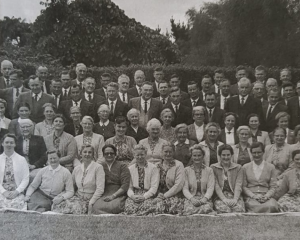One of New Zealand's most expensive dairy exports, lactoferrin, which sells for about $500,000 a tonne, has been contaminated with melamine.
But food safety officials say they don't know how the contamination occurred and are now looking at whether the melamine was in the raw milk.
The officials declined to say which manufacturer sent the contaminated lactoferrin to China, where the melamine was detected by in-market testing in the wake of the sale of poisoned milk as infant formula.
Only three New Zealand dairy companies produce lactoferrin - a milk protein used in sports drinks, infant formulas and capsules sold as dietary supplements to boost people's immune systems - and Fonterra and Westland have both told NZPA their products were not involved.
The remaining company, Tatua, based at Tatuanui near Morrinsville, is the world's biggest manufacturer of lactoferrin, and processes up to 14,000 tonnes of raw milk to extract just one tonne of the protein.
Tatua chairman Steve Allen referred media queries to the company's' chief executive, Paul McGilvary, but told NZPA he had been busy working with the New Zealand Food Safety Authority until tonight.
"This whole thing, internationally, is pretty major," said Mr Allen. Overseas perceptions of the New Zealand food industry were crucial and it was important to get all the facts right.
NZFSA director of compliance and investigation Geoff Allen told NZPA he believed the contaminated lactoferrin might have come from more than one company.
"We're still waiting for official results from all of the manufacturers of lactoferrin, so I can't say which one is in and which one is out."
Yesterday Mr Allen said the authority was considering any role which might have been played in the contamination by cyromazine, an insecticide which breaks down to melamine in mammals.
NZFSA has 24 livestock drenches and sprays containing cyromazine listed among registered agricultural compounds on its website.
"The possible contribution of breakdown products from cyromazine is being included in the investigations that are underway.'
Dr Allen had earlier confirmed that NZ lactoferrin sent to China had been contaminated with melamine. "Explanations for its presence in this case include leaching from plastic involved in processing or packaging, or other unintended outcome of the manufacturing process."
"We can't say definitively where it's come from," he said.
The authority was following a lot of leads, and had so far ruled out deliberate adulteration, and had "practically eliminated" contamination caused by the manufacturing process, which is common to all three exporters.
"We can see no mechanism where melamine can be introduced or produced during the process," he said.
"Now, we're looking back and saying `how can it come in or be introduced in the raw material'," he said.
Dr Allen said the contamination was at low levels which did not present any health risk for consumers.
He questioned whether the melamine would be detectable once it was diluted when used as an ingredient in a finished product.
In June, NZFSA published a list of contaminant levels it will allow in animal products, and specified a maximum permissible level of cyromazine and melamine as 0.3mg/kg in sheepmeats, and 0.15mg/kg in poultry and eggs.












